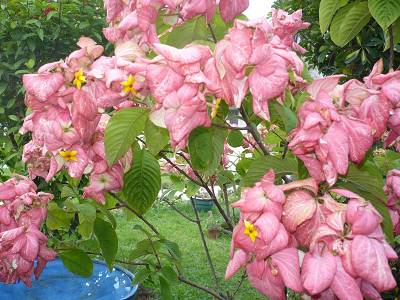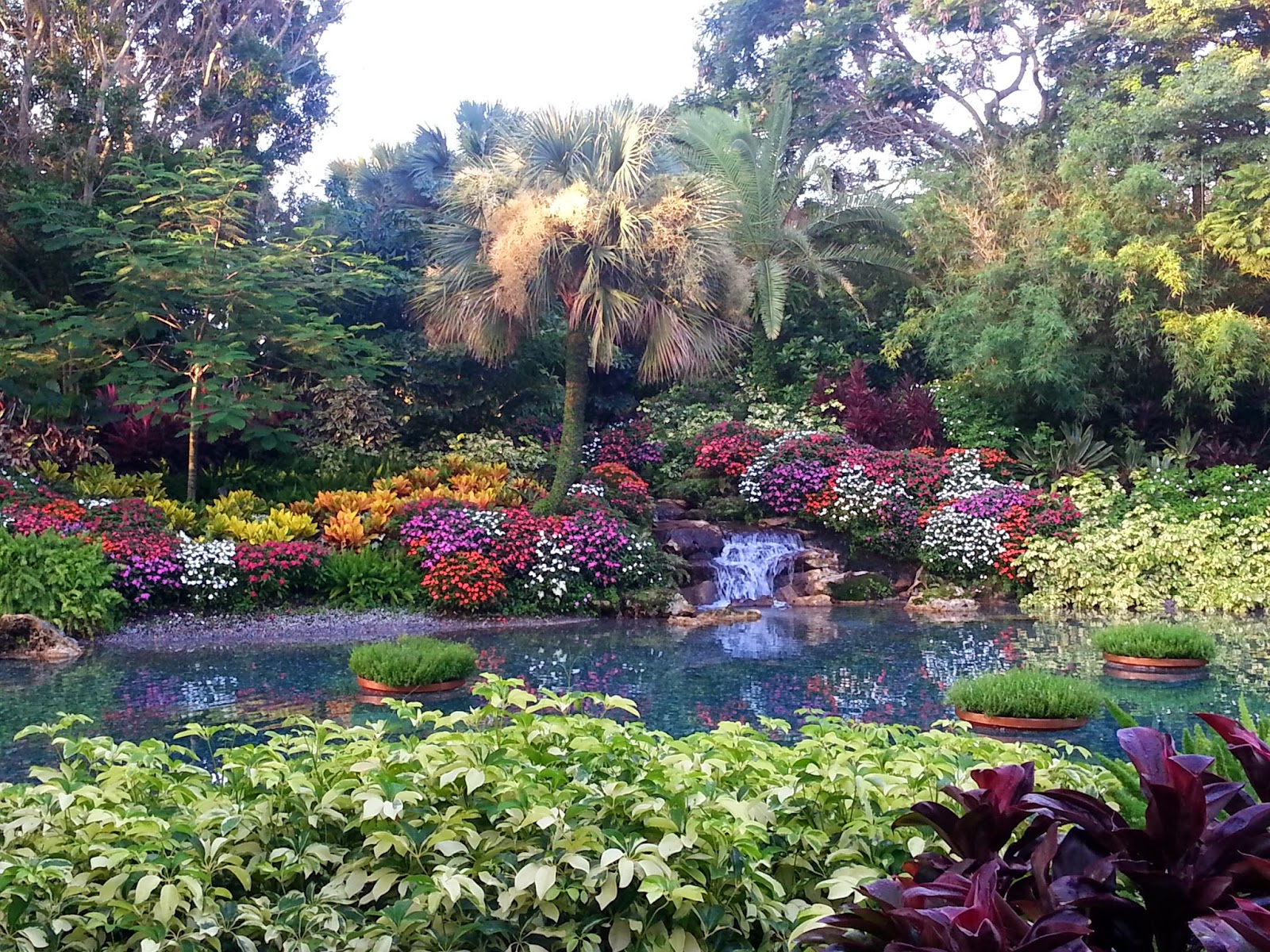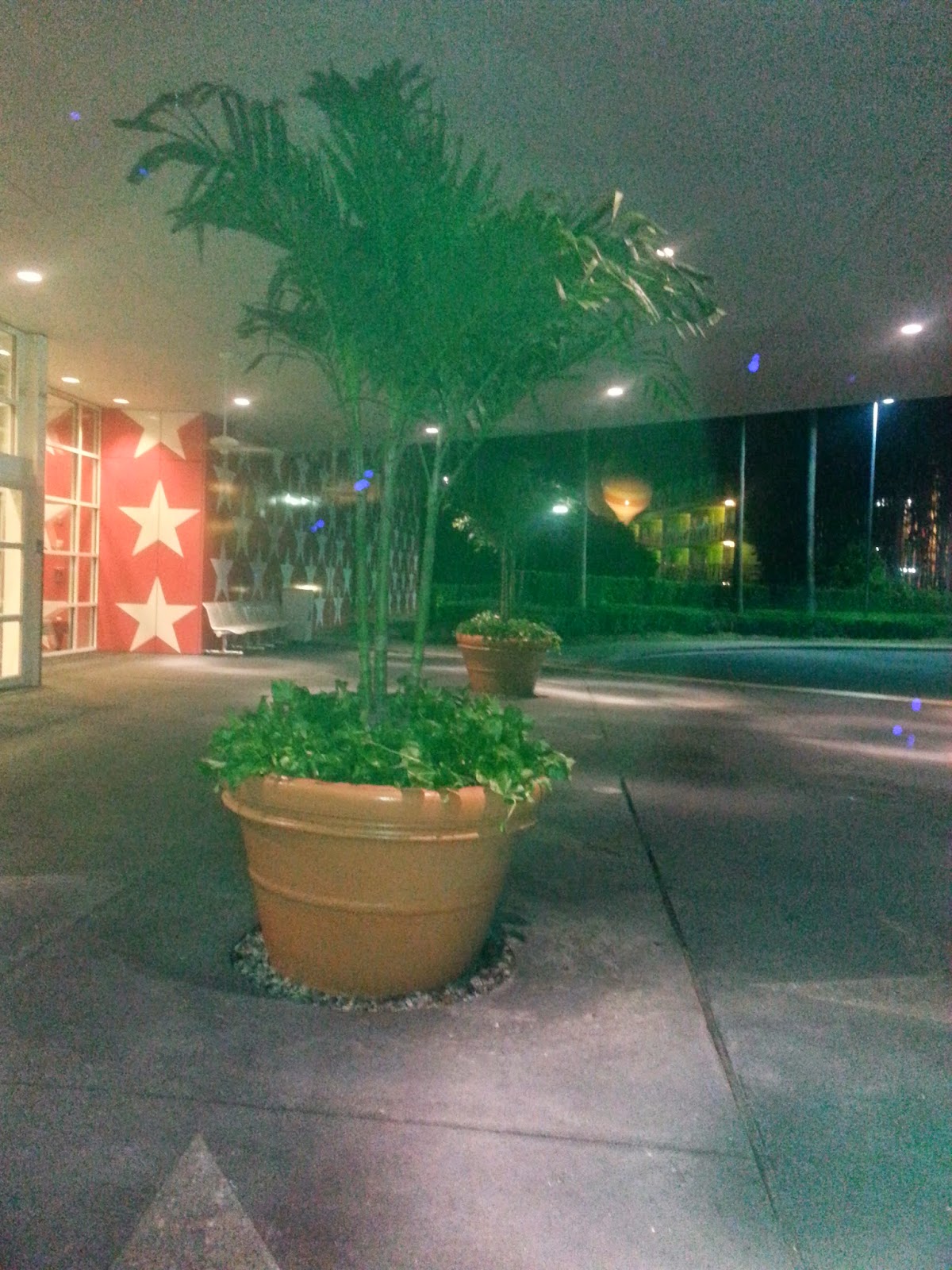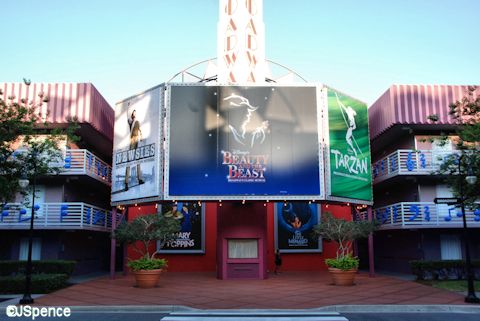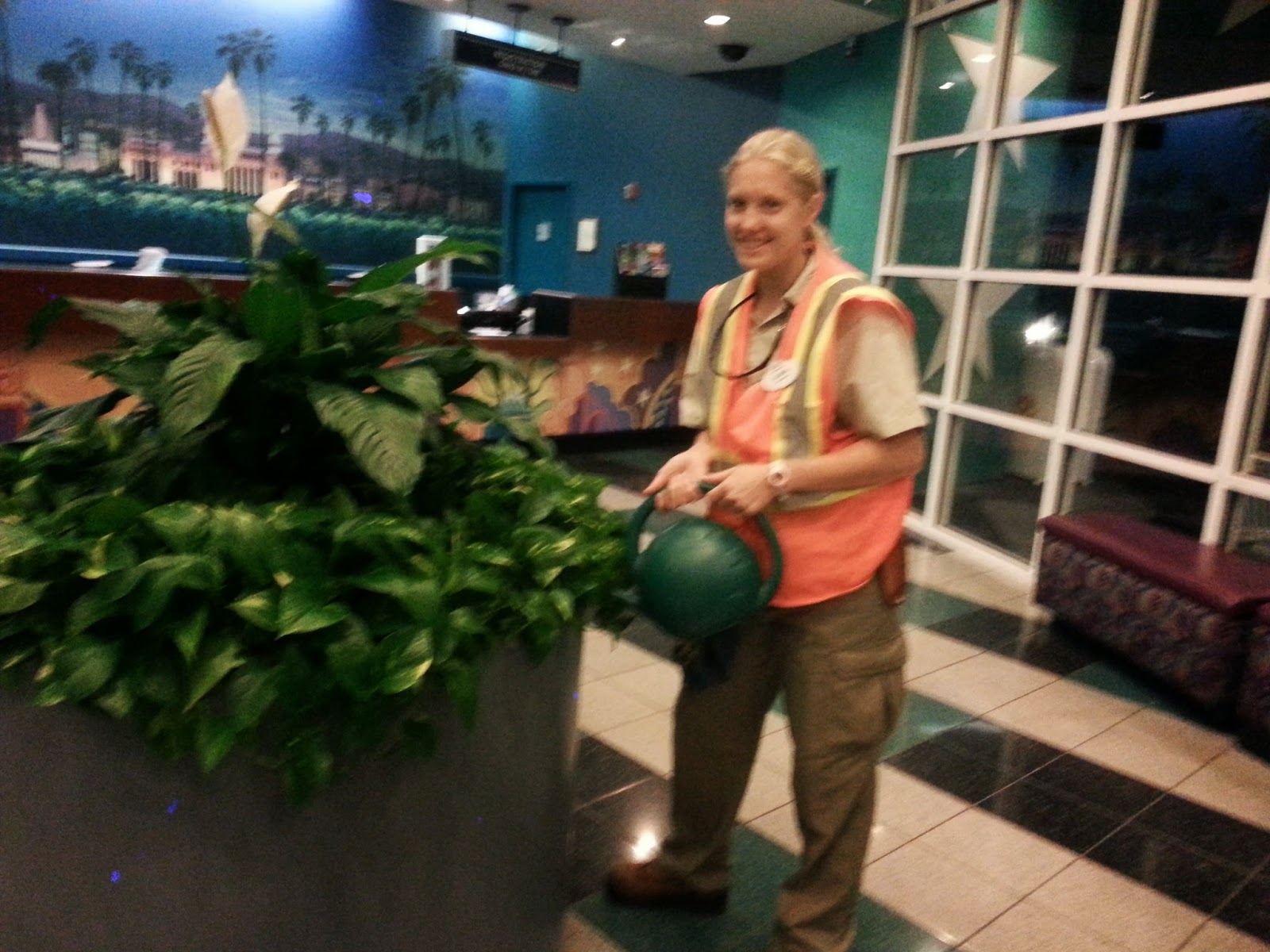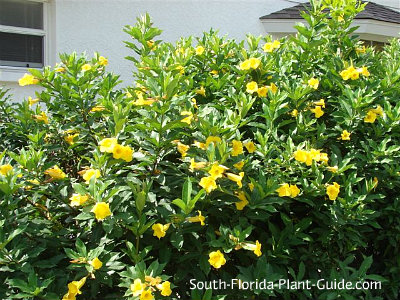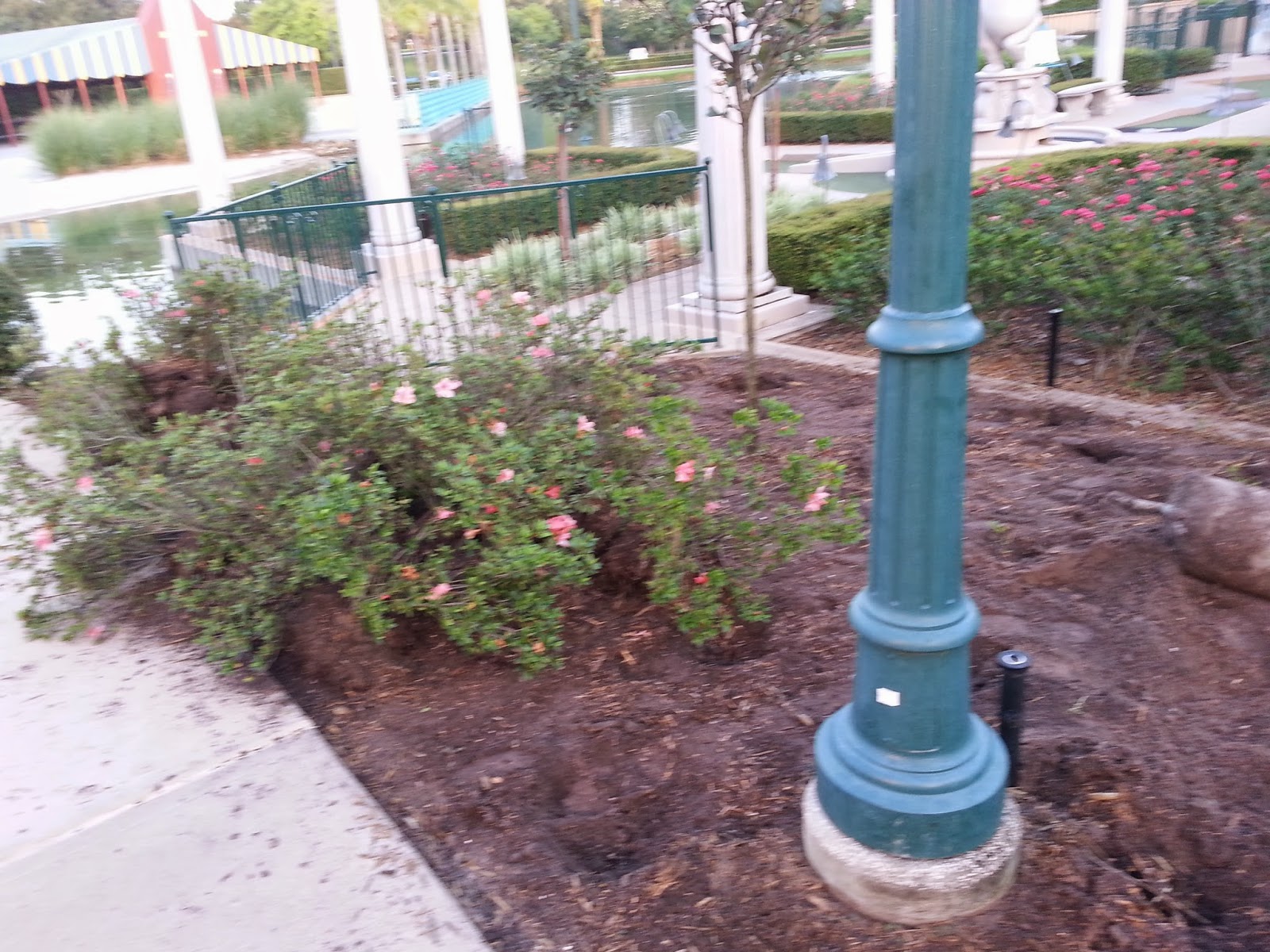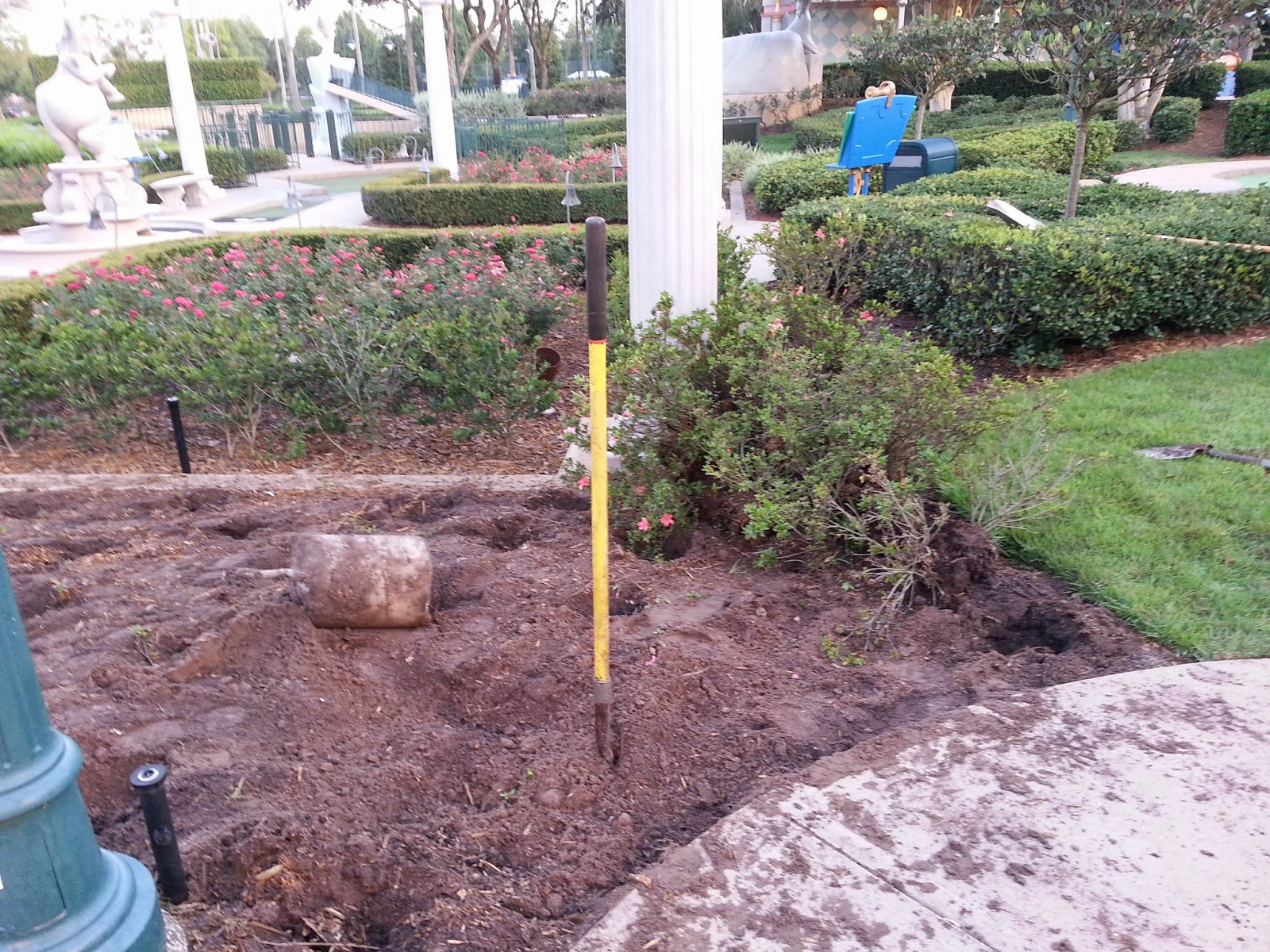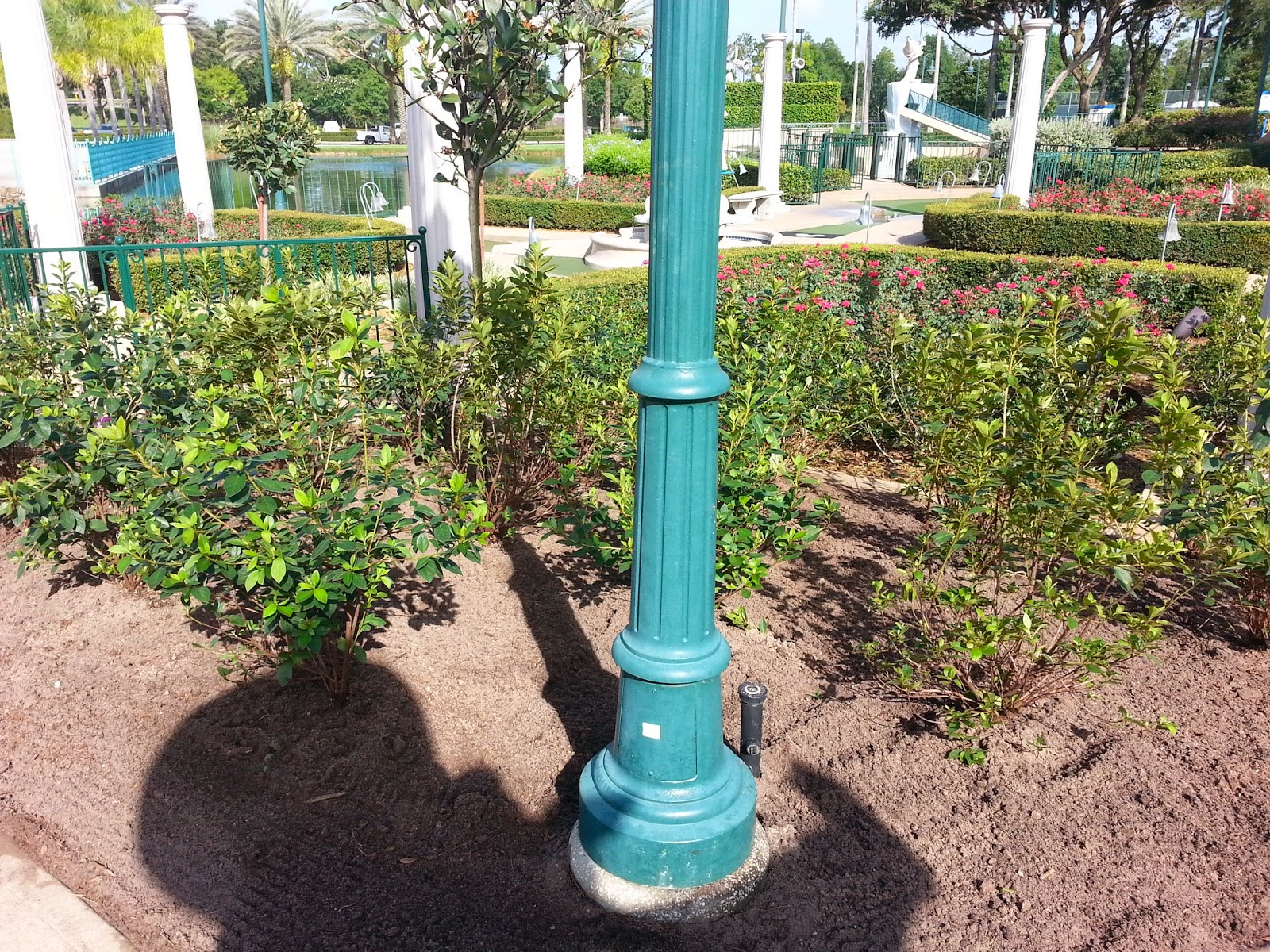Tuesday morning Vanvisa and I worked with the habitat crew. First, we followed them in the truck to the truck entrance of the Kilimanjaro jungle safari. We had to wait for awhile for them to open up the gates. Once inside, we drove through the safari and stopped in various places to trim back plants that were too close to where the ride cars drive through and thus hit people in the face. We also trimmed back some plants that were too tall. However, because it is the jungle safari we want to keep the area natural so plants are not cut back unless absolutely necessary. After trimming the safari, we went with Joel over to Animal Kingdom lodge. While at the lodge, we planted some ginger and watered it in. Then, we did some trimming around the smoking area. After that, we did some trimming in another part of the lodge.
Wednesday morning we were once again with the habitat crew. Again, we had to wait for the gate to be opened. The crew cut back some grass using weed whips and trimmed some low branches off of trees while Vanvisa and I helped to pick up the debris. After that we again went with Joel and did some trimming at the Animal Kingdom Lodge. We also looked at a bed by the parking garage that we would be replacing the following day and decided what plants we were going to put there. We had another short gardener meeting today which reviewed the safety tip of the week celebrate safely. Three of the interns (Mark, Austin, and Stephanie) from Epcot had the opportunity to work with the resident gardeners today. After break, we picked up the plants for the following day.
 Thursday morning was another day working with the habitat crew. Again we went into the safari, but this time we were helping Rob and little Judi who were on the high reach above the hippo pool. The habitat crew was there to help spot them as well as took down some low branches. We also helped the crew to pick up the debris. After that, the crew did a quick drive through of the safari. Then, we went with Joel and did some planting of ginger root, some ornamental grass, and azalea by the parking garage. In doing this, we dug out and got rid of the old plants, leveled off the soil, and then planted the new plants. Then, Joel took us back to the yard as Vanvisa and I had to leave a little early to head off to the internship banquet, but first we said goodbye to Jeff our manager as he was going to be gone the following day which was the last day of the internship.
Thursday morning was another day working with the habitat crew. Again we went into the safari, but this time we were helping Rob and little Judi who were on the high reach above the hippo pool. The habitat crew was there to help spot them as well as took down some low branches. We also helped the crew to pick up the debris. After that, the crew did a quick drive through of the safari. Then, we went with Joel and did some planting of ginger root, some ornamental grass, and azalea by the parking garage. In doing this, we dug out and got rid of the old plants, leveled off the soil, and then planted the new plants. Then, Joel took us back to the yard as Vanvisa and I had to leave a little early to head off to the internship banquet, but first we said goodbye to Jeff our manager as he was going to be gone the following day which was the last day of the internship.
Friday morning I went with habitat crew. First, we planted lemon grass in the tiger exhibits. I helped load and unload the Toro and truck with the lemon grass as well as bring it into the exhibit. Then, we drove through the safari and did some trimming of Acacia which was near the lion exhibit that had been hitting guests. Then, the habitat crew dropped me off where Rob was working so that I could meet up with them to go on the jungle safari which they were doing with the three interns (Eric, Amanda, and Kyle) from Epcot who had the opportunity to work with the resident gardeners at Animal Kingdom today. I left an hour early from work to go to the nursery to get changed, turn in my clothes, turn in my belt, rain coat, and hat as well as turning in my main gate pass, guest passes, as well as my Disney ID. I also filled out a survey about the internship.
Plant of the week:
 The plant of the week is lemon grass Cymbopogon citratus. It is a type of ornamental grass in the Poaceae family. The native range is Southern India, Sri Lanka. It grows in zones 10-11 but roots may be hardy to zone 8b. Lemon grass grows to be 2-3' tall and 2-3' wide. Lemon grass rarely flowers. It does best in average, medium, well-drained soils in full sun. Lemon grass tolerates light shade but prefers full sun and tolerates a wide range of soils but is best in organically rich loams with good drainage. Lemon grass can be used as an annual, herb, or in a rain garden. The leafs are fragrant, evergreen. Lemon grass tolerates black walnut and air pollution. While seed is difficult to obtain, nurseries and seed companies generally sell starts in small pots. Fresh stalks of lemongrass with the leaves and roots absent can also be purchased from grocery stores specially in Asian cuisine and can be rooted in a glass of water. Planting should occur in the spring after the last frost date. Stalks can be harvested (cut off top leaves and save 6" sections of the bulbous shoot bases) in fall just before the first frost and frozen for culinary use during the winter. Leaf sections with attached roots can be divided and potted up with top leaves removed for overwintering in a bright window which can be used as starts the following year. Lemon grass is used as a flavoring in Thai, Vietnamese, Laotian, and Cambodian cooking. Extracted plant oils have been used for many years in herbal medicines and perfumes. There are no known serious insect or disease problems however spider mites can be a serious pest on indoor plants. Typical garden uses for ornamental grass is for herb gardens, borders, along walkways or for tubs/containers. Bulbous lower leaf sections are harvested for cooking while tough and inedible sections of mature leaf blades may be used for fresh or dried for flavoring teas, soups, or stews.
The plant of the week is lemon grass Cymbopogon citratus. It is a type of ornamental grass in the Poaceae family. The native range is Southern India, Sri Lanka. It grows in zones 10-11 but roots may be hardy to zone 8b. Lemon grass grows to be 2-3' tall and 2-3' wide. Lemon grass rarely flowers. It does best in average, medium, well-drained soils in full sun. Lemon grass tolerates light shade but prefers full sun and tolerates a wide range of soils but is best in organically rich loams with good drainage. Lemon grass can be used as an annual, herb, or in a rain garden. The leafs are fragrant, evergreen. Lemon grass tolerates black walnut and air pollution. While seed is difficult to obtain, nurseries and seed companies generally sell starts in small pots. Fresh stalks of lemongrass with the leaves and roots absent can also be purchased from grocery stores specially in Asian cuisine and can be rooted in a glass of water. Planting should occur in the spring after the last frost date. Stalks can be harvested (cut off top leaves and save 6" sections of the bulbous shoot bases) in fall just before the first frost and frozen for culinary use during the winter. Leaf sections with attached roots can be divided and potted up with top leaves removed for overwintering in a bright window which can be used as starts the following year. Lemon grass is used as a flavoring in Thai, Vietnamese, Laotian, and Cambodian cooking. Extracted plant oils have been used for many years in herbal medicines and perfumes. There are no known serious insect or disease problems however spider mites can be a serious pest on indoor plants. Typical garden uses for ornamental grass is for herb gardens, borders, along walkways or for tubs/containers. Bulbous lower leaf sections are harvested for cooking while tough and inedible sections of mature leaf blades may be used for fresh or dried for flavoring teas, soups, or stews.Information from: http://www.missouribotanicalgarden.org/PlantFinder/PlantFinderDetails.aspx?kempercode=a504
Overall this internship was a great experience. I enjoyed my time in Florida and look forward to the opportunities that my career in horticulture has in store for me.

